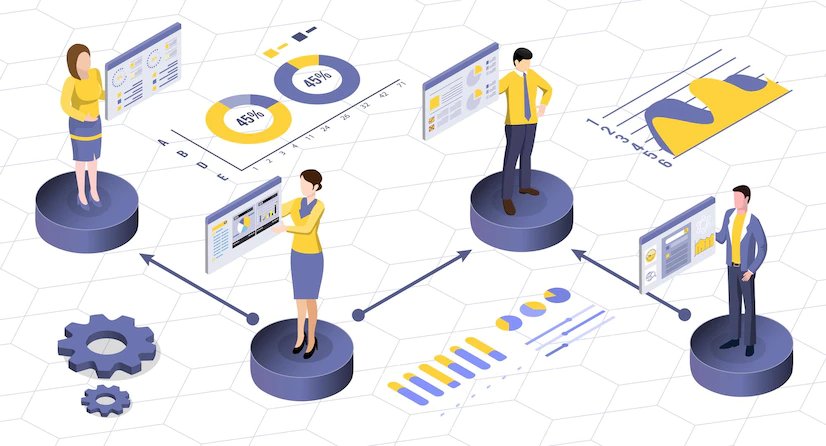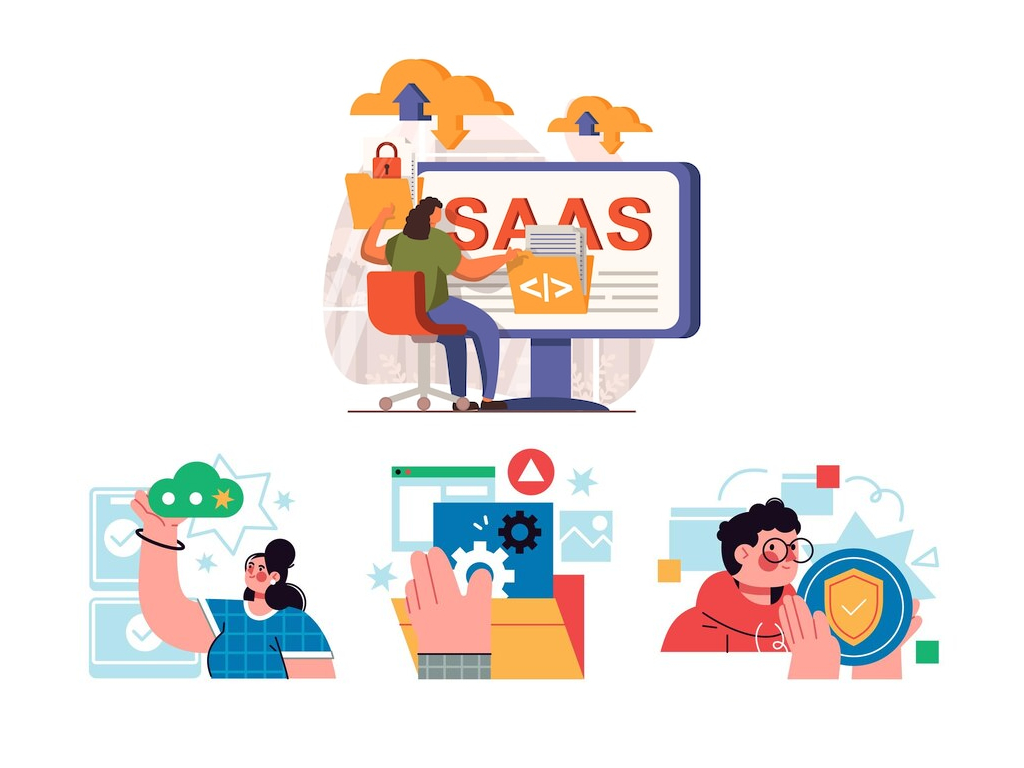What purpose does digitalization serve if it isn’t to help businesses operate more efficiently and with greater agility? SaaS management tools have enabled companies to take their business to the next level with amazing functionalities. SaaS management software allows you to collaborate well and make it easy to schedule meetings, assign work and track the project progress.
Remote working can have its benefits, but it can be exhausting for team members to communicate and collaborate. This is why using a SaaS management tool is a good idea. Several organizations looked into SaaS tools and began digital transformation initiatives, particularly during the epidemic.
Furthermore, SaaS tools have many advantages. However, you must pick a tool that actually benefits your company. Also, you need a platform that should be beneficial to large as well as small businesses. A Saas management platform such as Zluri may assist a business with as few as 50 workers up to 500 employees. It is worth buying because of its distinctive features, such as automatic renewals, vendor management, and application security.
Buying a SaaS tool still happens after you’ve determined what your company requires. This article will discuss 5 essential tips to keep in mind when selecting a SaaS management tool. So, let’s get started right now.
5 Important Tips To Remember When Selecting A Saas-Management Platform
Now that you know the advantages of SaaS management platforms, the actual question is: out of all the SaaS tools available, which one should you choose? Therefore, relax because we will get right to it. The following 5 essential tips will assist you in selecting the tool wisely.
#1. Check To See Whether It Manages Contracts
Your company might have several SaaS applications, mainly if your business is well-established. Keeping track of hundreds or thousands of contracts and invoices can be challenging. Missing out on crucial contract details like auto-renewals, renewal dates, or billing frequency can result in unnecessary spending. This could lead to a decrease in the productivity of your company.
Furthermore, you need SaaS software that extracts all the contact details to rapidly identify which vendors are on auto renewal and their terms and conditions. This information will allow you to communicate with SaaS vendors smartly. This contract data should be collected by SaaS management software and displayed on a single dashboard for simple access.
If the SaaS tool provides this feature, you can take advantage of it as follows:
- You will not be required to attempt to delete invoices and contracts from employee-shared folders or mailboxes.
- You can monitor and manage all invoices and contracts through a single platform.
- This information will give you valuable insight that can be used to negotiate with vendors.
#2. Ensure That It Automatically Discover All Applications And Vendors
A SaaS tool should help determine your company’s spending and usage on different SaaS applications. It should be able to automatically identify all vendors and applications used by your company, as well as automatically put them in their appropriate software categories.
Furthermore, suppose the SaaS solution has the feature to integrate various financial systems such as Intuit, Oracle NetSuite, Sign-On (SSO) systems like Google Workspace, and others. In that case, it will be easy to do this. Once the device has access to the knowledge from 2 systems, SaaS management software can recognize the usage and spend it on different apps in your organization. Therefore, your SaaS platform must have the essential feature of automatically discovering all applications and vendors.
#3. Make Sure You Have Backups And Disaster Recovery Plans
Henfield estimates that it takes, on average, two days to penetrate a company’s internal network. Additionally, there have been a minimum of 1,243 publically disclosed security incidents during 2021.
Therefore, your SaaS tool must ensure that cyber-attacks and security breaches do not occur.
However, just in case this occurs, a disaster recovery plan should be in place to prevent data loss. You must be aware of the types of disaster recovery, and incident management plans the SaaS security company offers.
It is important to clearly define the roles of the SaaS tool and your company from the beginning. Moreover, you not only need to know what your SaaS platform can do, but you should also be aware of how much accountability you would take as a business in the event of data breaches. You should also be aware of the type of recovery you prefer, the amount of downtime you are willing to take, and how often backups you require.
Therefore, select a SaaS platform that offers disaster recovery plans that meet your company’s needs.
#4. Ensure That The Saas Tool Has The Best Security Features
Cybersecurity is just as critical as physical security in today’s data-driven society. Sidepost research shows that around 43% of cyberattacks are directed at small businesses. However, nearly 14% of small enterprises are ready to defend themselves.
Considering the data servers have, possibly more.
Because of this, there is a growing need for cybersecurity professionals worldwide. But in terms of software, how do you make sure you choose the one that provides the security?
Furthermore, your SaaS management software has access to every piece of software and application used by your business. Although this is important to monitor things, it can also be dangerous because the possibility of security breaches increases.
Therefore, you require a distinct SaaS platform that tracks and manages the security of SaaS apps and offers control access to the workers.
All of your company’s applications would be known to the SaaS management tool. As a result, it ought to notify you when any application has a security flaw. Managers need to be aware of these security flaws in all applications used in the business.
Therefore, it is essential to check that the SaaS management platform you choose for your business has the most recent vendor data available.
#5. Analytics And Usage Tracking
Robust analytics stacks can significantly impact your company’s performance if used properly. It will help you track and understand the performance of your company. But how can you do that?
You should first be aware of which apps are used and which are not by workers. An analysis of employee application usage will allow you to make informed decisions about preventing and spending data on numerous app clouds. The data might assist you in making wise decisions before the renewal.
These 5 important tips will assist you in finding SaaS management software. You can ask a few more questions before choosing an appropriate SaaS platform for your business.
- Does the platform meet the needs of your company?
- Does it meet your needs in terms of price?
- Is the solution scalable?
- Will the software compatible with the future and current user environments?
- What security certifications possess the SaaS provider?
Conclusion
It is now clear from the article that having a SaaS management platform will help you upscale your company. SaaS tools vary based on their costs, use-care scenario, and availability of updates. While some tools provide annual updates, others may offer quarterly updates. Some tools have auto-renewals at specific time intervals, while other tools do not have them.
Now, you are the only one who can select which platform best suits your needs. Even though the article might highlight the advantages of SaaS software, it does not suggest which tool you should purchase. You must have a clear list of requirements, including why you need a tool and what features are essential to your company.
As soon as you have figured it out, look into the available tools and select the one that best suits your needs as a business and your budget.
Thanks for reading!
ABOUT AUTHOR
Over 4 years’ experience in the research industry. Experience with research and consulting projects, catering to domains such as ICT, Health & Pharma, and packaging. Managed projects on both B2B as well as B2C perspectives, which includes consumer preference analysis, interviews with key executives, etc









